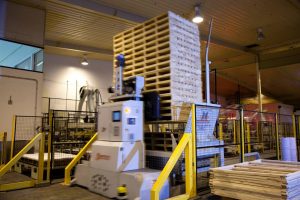
More than a century later, the dairy farm is a sea of green paddocks, some dotted with bright yellow sunflowers, peas winding themselves up stems of sorghum, fava beans and buckwheat.
“I’m a big fan of the idea that different plants can do different things to your soil without having to get into a tractor and burn diesel,” Cole said.
He has been “dipping his toes” in regenerative farming practices over the last two seasons on the family’s 220-hectare farm and 40-hectare run-off south of Dargaville.
While the farm is not fully regenerative, Cole is an advocate of what regenerative practices can do for farming soils.
“We experimented last year with a paddock that we call the duck pond, for obvious reasons. We had tried everything with it.
“I had done a lot of reading on sunflowers and millet and their ability to break up tight soil, so we planted that mix in the paddock and the results were amazing.”
The sunflowers and millet broke up the soil and the paddock is now one of the best on the farm.
The resulting crop was mixed with molasses and a bit of baleage for their holstein friesian herd, which thrived on the high-protein mix.
“The product that we took off to feed the cows was incredible. If you were growing that you would never grow maize to feed to your cows again.“
Hot, dry summers in recent years made Cole and his wife, Karen, realise the yield from their maize was too low and it was proving too expensive.
“I started doing a lot of reading and the regenerative approach seemed to make a lot of sense.”
Now they make up to 1000 bales of baleage from traditional pasture and the paddocks they are regenerating.
This season they added peas to their regenerating paddocks to increase nitrogen in the ground and sorghum because the peas yield better with something to climb.
Buckwheat was added to release acids into the soil and free up phosphate to also help with growing better crops.
“It’s not a fully regenerative system because the cows aren’t feeding directly off it. We cut the crop then let the paddock go back to grass once the other plants have done their job to restore and rejuvenate the soils.”
Cole has been on the property for 32 years alongside Karen, who he met in 1996. They have four children, Thomas, 12, who is at Dargaville Intermediate. Stephanie, 21, studied agricultural science at Massey University. Victoria, 19, is studying law at Auckland University and, Carolyn, 17, is at Dargaville High.
Cole’s great-grandfather, Herbert, won the original 78-hectare farm block in a WWI ballot and moved his wife, Marian, and their six children from Nelson to Northland in 1915.
They arrived to a single man’s quarters moved down from the Tataarariki Sawmill and a four-bale walk-through shed.
Cole Rd, which they now live on, was named after Herbert.
The fourth-generation of his family to run the farm, Cole is able to trace most of the herd’s genetics back to Pukeroro, near Cambridge.
In the days before artificial insemination (AI), his grandfather, Colwyn, would drive his Bedford to the Pukeroro sale, bringing back a cow and a bull.
When AI was introduced the family continued to use Pukeroro bulls.
Cole describes them as cows that “know how to milk” and over the generations he and Karen have managed to breed out their tendency to kick in the shed.
While they also used to dabble in raising beef, the Coles now sell off any excess calves and use the land to make their crops.
“You have to accept it for what it is up here, it’s not an easy environment to farm in.”
Today the home farm straddles a gully and rolls down onto peat flats. There is still a significant amount of marginal wetland, but where previous generations would have dug them out, Cole said they are replanting them again in tea tree, flax and cabbage trees.
“They are more use to us as a wetland than as a paddock that won’t really produce. I think the pendulum has swung one way for a few years, and I’d like to think we’re bringing it more back into the middle again.
“I think each generation of our family have pushed different things a little bit. We’re just the latest version of that.”

























